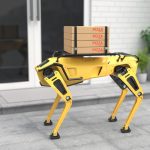As nostalgia for the 1980s and shows such as “Stranger Things” resurfaces, critical infrastructure operators are grappling with technology from that era that persists in operational technology (OT) environments. While pop culture references highlight the vintage appeal of old control panels, today’s organizations must confront real threats originating from vulnerabilities in these legacy systems. Connecting outdated devices to modern networks has introduced serious exposures, despite progress in cybersecurity frameworks. Recent attacks demonstrate that commonly known flaws, rather than sophisticated exploits, often provide threat actors with access to essential systems.
Reports over the last few years noted persistent security gaps in OT environments, primarily due to the extensive use of legacy infrastructure. Earlier discussions emphasized patch delays and the difficulty of replacing costly industrial control systems. These trends persist, but the landscape has become more complex as attacks like Volt Typhoon gain sophistication and regulatory guidance, such as the Purdue Enterprise Reference Architecture or IEC 62443, becomes more widely adopted. With cloud computing and industrial IoT initiatives increasing connectivity, previous measures now face fresh challenges.
How Do Legacy Systems Increase Security Risks?
Critical infrastructure environments involve both IT and OT networks, often spread across various physical locations. Devices like ICS, SCADA systems, and PLCs, which were originally not designed for internet connectivity, are now often exposed, especially as organizations implement digital transformation. This expansion increases the risk as legacy protocols, such as Modbus and DNP3, lack modern security features. Organizations commonly face persistent vulnerabilities because legacy systems prioritize uninterrupted productivity, leading to slow or impossible patch cycles.
What Role Do Advanced Persistent Threats Play?
Groups such as Volt Typhoon and Salt Typhoon exploit well-known vulnerabilities in networking devices to infiltrate critical infrastructure. These threats typically employ stealthy tactics, using existing system tools to avoid detection and maintain undetected access. Cybersecurity agencies recommend that organizations keep systems updated and focus on early warning signs, rather than waiting for evident signs of compromise.
CISA has stated, “Asset inventories and strong network segmentation are key to detecting and mitigating potential attacks.”
Are Current Guidance and Models Addressing These Issues?
Models like the Purdue Model and frameworks such as IEC 62443 offer strategies including robust network segmentation and careful patch management to help protect unpatchable equipment. Recent guidance from the Cybersecurity and Infrastructure Security Agency (CISA) stresses the development of thorough asset inventories. Implementing these recommendations requires balancing security improvements with the practical realities of maintaining operations built around legacy investments.
“It’s important for organizations to understand and manage their aging systems rather than expect full replacements,” noted a CISA spokesperson.
Many industrial environments are constrained by operational demands and budgetary concerns that limit their ability to replace or significantly upgrade legacy equipment. While the push toward asset visibility and new security protocols continues, organizations are encouraged to not only rely on historic frameworks but also to adopt ongoing monitoring for unconventional signs of intrusion. The juxtaposition of advancing technology and the persistence of outdated systems remains a defining challenge.
Organizations responsible for critical infrastructure must weigh the risks of legacy OT systems against the cost and feasibility of modernization. Asset inventories, segmentation, and pragmatic patch management provide strategies for mitigating risk, but the process requires a clear understanding of the limitations of their environment. For readers, understanding these recommendations is crucial, particularly those overseeing or working with OT systems: focusing efforts on visibility, incremental security upgrades, and layered defenses will yield more resilient operations even if full replacement remains out of reach.










